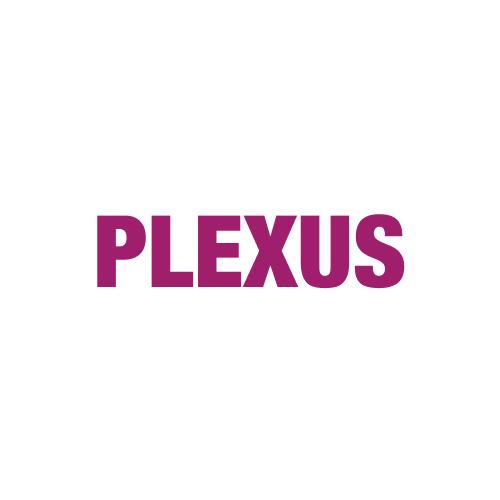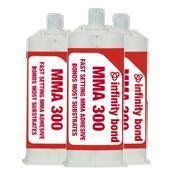August 23, 2024
There are a lot of adhesives on the market with similar capabilities and chemistries. Because there so many similarities, determining which specific product is the best for your application and budget can be a challenge.
To help, we compared the strength of Plexus® MA310 versus Infinity Bond MMA 310 with an American Society of Test Methods (ASTM) test. These two products have almost identical chemical makeup but vary in price. Plexus MA310 is a well-known and popular product that tends to come with a higher price tag. On the other hand, Infinity Bond MMA 310 is not as well-known but is a cheaper alternative.
Setting Up the Strength Test

Following the guidelines laid out by the American Society of Test Methods (ASTM), we completed a D1002 lapshear test to compare the strength of Plexus MA310 versus Infinity Bond MMA 310.
For the test, two pieces of ASTM standard aluminum metal are bonded with the different adhesives and pulled apart with a universal testing machine. Before the actual testing takes place, the metals need to be prepared in a certain way. Each piece is scuffed and cleaned with isopropyl alcohol. When the two pieces are bonded, they are set up to overlap by half an inch with glass beads in the middle to ensure there is a 10-mililiter layer of adhesive. Finally, the bonded metals are cured overnight in an oven.
During the actual test, the bonded pieces are clamped on both ends and the universal testing machine will slowly pull them apart. The machine will record how many Newtons (N) and pounds per square inch (PSI) were required until the metal pieces experienced bond failure. The test was done on three samples for each adhesive and averaged to account for any outlying results.
Looking at the Results
After all the tests were completed, our lab technicians found the following results.
| Products | Sample 1: | Sample 2: | Sample 3: | Average: | ||||
| Infinity Bond MMA 310 | 6410 N | 6295 N | 6460 N | 6388 N | ||||
| Plexus MA310 | 1358 N | 1516 N | 1441 N | 1438 N | ||||
|
Products
|
Sample 1:
|
Sample 2:
|
Sample 3:
|
Average:
|
||||
|
Infinity Bond MMA 310
|
2882 PSI
|
2830 PSI
|
2905 PSI
|
2872 PSI
|
||||
|
Plexus MA310
|
611 PSI
|
682 PSI
|
648 PSI
|
647 PSI
|
||||
According to our tests, the bonds created by Infinity Bond MMA 310 are stronger than the Plexus MA310 adhesive bonds. Infinity Bond MMA 310 reached an average of 6388 N and 2872 PSI when it finally experienced cohesive failure. In contrast, Plexus MA310 methyl methacrylate experienced adhesive failure at an average of 1438 N and 647 PSI. Between the two measurements, the average difference was 4950 N and 2225 PSI.
Evaluating the Results


The results were clear. Infinity Bond MMA 310 was able to withstand more force than the Plexus adhesive MA310. Although the chemical makeup and general properties are similar, there was a noticeable difference in strength. On top of that, there is also a difference in price. While the MA310 for Plexus is more well-known, it is also the more expensive option compared to the Infinity Bond alternative.
If you have been using the Plexus MA310 methacrylate adhesive, it may be time to make the switch to Infinity Bond. Like the Plexus MA310 adhesive, the Infinity Bond MMA 310 is also a methyl methacrylate adhesive. It is particularly well-suited for structural bonding including with automotive and product assembly applications. It has a 10-minute open time and is resistant to extreme temperatures, weather, shock, and some chemicals.
Make the Switch
Now that you know the difference between Plexus MA310 and Infinity Bond MMA 310, it is time to make the switch and place your first order of Infinity Bond MMA 310. If you have more questions or want more information about how to optimize your adhesive use, you can contact one of our adhesive experts.








